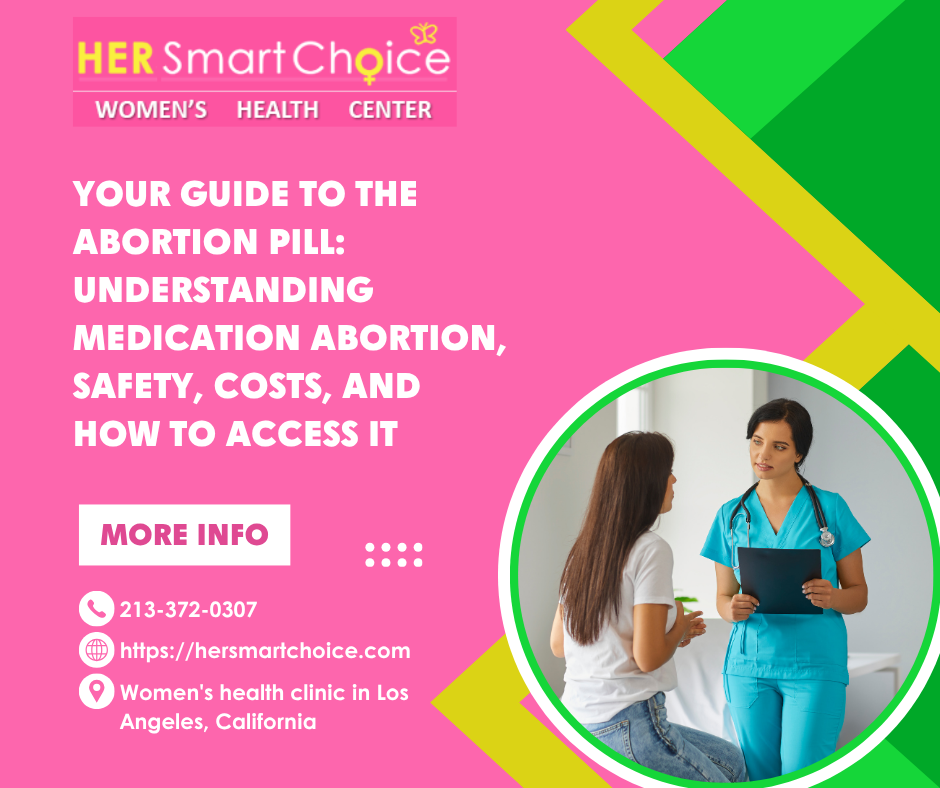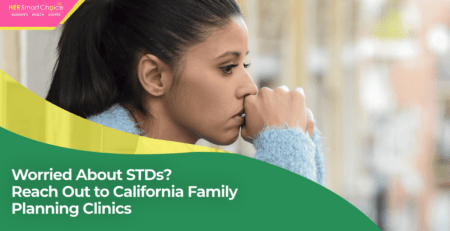Your Guide to the Abortion Pill: Understanding Medication Abortion, Safety, Costs, and How to Access It

Medication abortion, often called the abortion pill, provides a private, non-surgical way to end an early pregnancy. It involves taking two medications—mifepristone and misoprostol—and allows you to manage your care at home with ongoing medical support. This guide will walk you through how the pills work, what to expect regarding side effects, their safety and success rates, costs and financial aid, how to access them in different states, how they compare to surgical options, and what to do to prepare and for aftercare. By understanding each step, from how the medications block hormones to how they help your body expel pregnancy tissue, you can make informed choices and find the resources you need, whether through telehealth or in-person clinics.
Follow Us!
How Does the Abortion Pill Work? A Look at Mifepristone and Misoprostol

The abortion pill regimen works by using mifepristone to stop progesterone, a hormone essential for maintaining a pregnancy, which then causes the uterine lining to break down. Misoprostol is then taken to cause the uterus to contract and the cervix to open, effectively ending the pregnancy.
Here’s a breakdown of the two-step process, detailing what each medication does and what you can expect:
| Step | Medication | What It Does | What to Expect |
|---|---|---|---|
| 1 | Mifepristone | Blocks progesterone, detaching the pregnancy from the uterine wall. | Pregnancy tissue begins to detach. |
| 2 (24–48h later) | Misoprostol | Causes the uterus to contract and the cervix to soften. | Expulsion of pregnancy tissue and blood. |
This step-by-step approach uses hormonal changes and uterine contractions to safely end an early pregnancy.
What Is Mifepristone’s Role in Medication Abortion?
Mifepristone works by blocking progesterone, the hormone that supports the uterine lining and pregnancy. Without progesterone, the lining breaks down, and the pregnancy tissue detaches from the uterine wall. By blocking progesterone receptors, mifepristone stops the pregnancy from developing further and prepares the uterus for the action of the second medication. This initial step ensures the pregnancy tissue is ready to be expelled, making the process more effective and reducing the chance of an incomplete abortion.
How Does Misoprostol Cause Uterine Contractions and Cervical Changes?
Misoprostol, a type of prostaglandin, triggers the uterus to contract and the cervix to open. It does this by binding to receptors in the uterine muscle, causing rhythmic contractions, and by softening the cervix. These actions are similar to what happens during a natural miscarriage, helping to expel the detached tissue. By stimulating the uterus and opening the cervix, misoprostol completes the process started by mifepristone, leading to a high success rate for early pregnancies.
What Is the Two-Step Process for Taking the Abortion Pill?
Your journey begins with a consultation and possibly an ultrasound to confirm the pregnancy is in the uterus and to determine how far along you are. You’ll take the first pill, mifepristone, by mouth, usually under the supervision of a healthcare provider. About 24 to 48 hours later, you’ll take the second medication, misoprostol, either by placing it in your cheeks or vagina, as directed. You can expect cramping and bleeding to start within a few hours after taking the misoprostol. A follow-up appointment, which can be in person or via telehealth, is important to ensure the abortion is complete. Sometimes, a pregnancy test is used to confirm this.
What Are the Common Side Effects of the Abortion Pill and How Can You Manage Them?
Experiencing side effects from medication abortion is normal and usually similar to what happens during a heavy period or miscarriage. These effects indicate the medication is working and can typically be managed with simple remedies.
| Side Effect | Why It Happens | How to Manage It |
|---|---|---|
| Cramping | Your uterus is contracting. | Over-the-counter pain relievers like ibuprofen and using a heating pad can help. |
| Heavy bleeding | Your body is expelling pregnancy tissue. | Use sanitary pads, rest, and stay hydrated. |
| Nausea & vomiting | A common reaction to the medication. | Medication to prevent nausea can be prescribed. |
| Diarrhea | The medication can affect your digestive system. | Drink plenty of fluids to stay hydrated. |
| Mild fever or chills | A temporary effect of the medication. | Wear light clothing and take fever reducers if needed. |
These symptoms usually reach their peak about 4–6 hours after taking misoprostol and then gradually decrease over a few days, which is a sign that the medication abortion process is completing normally.
What Side Effects Should You Anticipate After Taking the Abortion Pill?
You might experience cramping that ranges from mild to quite intense, similar to labor contractions. Expect significant bleeding, often with blood clots, which can continue for one to two weeks, gradually lessening over time. You may also feel nauseous, have diarrhea, feel dizzy, or have a low-grade fever. These effects are due to the medication causing your uterus to contract and the hormonal changes, and they are all part of the process as your body completes the abortion.
How Can You Effectively Manage Pain and Other Symptoms?
To manage pain, you can take ibuprofen every 6–8 hours as needed and use a heating pad on your lower abdomen. If you feel nauseous, taking prescribed anti-nausea medication with small snacks and sipping clear liquids can help. It’s also important to rest in a comfortable place and have someone supportive with you if possible. Keeping a record of your symptoms can help you see if your management strategies are working and provide useful information for your follow-up appointment.
When Should You Seek Medical Help for Side Effects?
Please reach out to a healthcare provider if you experience any of the following:
- Bleeding so heavy that you soak through more than two maxi pads per hour for two hours straight.
- Severe abdominal pain that doesn’t get better with pain medication.
- A fever over 100.4°F (38°C) that lasts longer than 24 hours.
- Any discharge that smells bad, which could be a sign of infection.
- No bleeding at all within 24 hours after taking misoprostol.
Getting prompt medical attention can help identify and treat any potential complications, like an incomplete abortion or infection, ensuring your health and safety.
How Effective and Safe Is the Abortion Pill? Understanding Success Rates and Risks
Medication abortion is a highly effective and safe method for ending an early pregnancy, thanks to well-established medical principles.
| Pregnancy Stage | Success Rate (%) | Important Notes |
|---|---|---|
| Up to 7 weeks | 98% | This is the most effective time for the medication to work. |
| 8–9 weeks | 95% | Slightly lower success rate as the pregnancy tissue is more developed. |
| 10–11 weeks | 93% | A follow-up appointment is recommended to confirm the abortion is complete. |
Exploring the Safety and Efficacy of Medical Termination of Pregnancy: A Comprehensive Review
A comprehensive review highlights that medical abortions using mifepristone and prostaglandin achieve success rates between 92% and 98% for pregnancies up to 49 days. The regimen of mifepristone and misoprostol is considered an efficient and secure method for terminating early pregnancies up to 10 weeks of gestation.
This research directly supports the article’s claims regarding the high success rates and safety of the abortion pill, particularly in the early stages of pregnancy.
What Are the Possible Risks and Complications with the Abortion Pill?
While medication abortion is very safe, there are a few potential risks:
- An incomplete abortion, which might require a procedure to finish.
- The pregnancy continuing if the medication doesn’t work fully.
- Heavy bleeding that could lead to anemia.
- Infection, especially if some tissue remains in the uterus.
- An allergic reaction to the medications.
Significant Adverse Events and Outcomes After Medical Abortion
A large-scale review of over 230,000 medical abortions reported that significant adverse events or outcomes occurred in 0.65% of cases. The most frequent significant outcome was ongoing intrauterine pregnancy (0.50%), while other serious adverse events were rare, occurring in 0.16% of cases.
This research supports the article’s assertion that medication abortion carries a low risk of complications, providing specific rates for adverse events.
Why Is It Crucial to Rule Out Ectopic Pregnancy Before Taking the Abortion Pill?
An ectopic pregnancy, where the pregnancy implants outside the uterus (usually in a fallopian tube), cannot be treated with mifepristone and misoprostol. If left untreated, it can be life-threatening. An ultrasound is essential to confirm the pregnancy is located within the uterus. This ensures you don’t take medication that won’t work and allows for the correct, timely treatment for an ectopic pregnancy, which often requires surgery or specific medication.
How Much Does the Abortion Pill Cost? Exploring Insurance, Financial Aid, and Access

The price of medication abortion can vary significantly, typically ranging from $300 to $800. This cost depends on where you get the service, your location, and how far along the pregnancy is. Fortunately, insurance and various assistance programs can help lower the amount you pay out-of-pocket, making this option more accessible.
What Is the Typical Cost of Medication Abortion?
The usual costs cover a consultation, an ultrasound, the prescription medications, and any necessary follow-up appointments. In most clinics, this total can be between $300 and $800. Telehealth services often have lower costs, sometimes between $300 and $500, because they have less overhead. In-person clinic visits might be at the higher end of this range.
Pricing of medication abortion in the United States, 2021–2023
A study on medication abortion costs in the U.S. found the national median price to be around $563-$568 between 2021 and 2023. It also indicated that virtual clinics offered significantly lower prices, with a median cost decreasing from $239 in 2021 to $150 in 2023, contrasting with in-person care which saw an increase from $580 to $600.
This study provides current data on the cost of medication abortion and demonstrates how telehealth options can reduce financial barriers, aligning with the article’s discussion on cost and access.
Is the Abortion Pill Covered by Insurance or Medicaid?
Many private insurance plans and state Medicaid programs do cover medication abortion, but this can depend on the specific laws in your state. Sometimes, you might need pre-approval or a referral from your doctor. It’s a good idea to check your benefits with your insurance provider or ask the clinic during your intake to understand what’s covered and avoid unexpected costs.
What Financial Assistance Programs Are Available for Abortion Pills?
Several organizations are available to help:
- National abortion funds that can assist with costs for travel and the procedure itself.
- Clinics often have their own programs that offer reduced costs based on your income.
- Charitable grants are sometimes available for people who face additional barriers to care.
- Online platforms can connect you with donors who want to help fund your care.
Where Can You Get the Abortion Pill? Options Include Telehealth, Online Pharmacies, and Clinics
You can access medication abortion through several channels:
- Healthcare providers at reproductive health centers.
- Telehealth services that can mail your prescription directly to your home.
- Online pharmacies (like Aid Access or others that follow legal guidelines) that can also mail medications.
What Is the Legal Situation for the Abortion Pill? Access and Rules by State
While the FDA has approved mifepristone and misoprostol as safe for medication abortion nationwide, the specific rules about accessing them vary from state to state.
How Do FDA Regulations Impact the Availability of the Abortion Pill?
The FDA’s approval initially included certain restrictions on how the medications could be dispensed. However, recent updates have allowed for broader distribution, including through pharmacies, which means you might be able to get them at retail pharmacies or through online providers.
Which States Allow Telehealth and Mail-Order Abortion Pills?
Many states permit telehealth consultations and mail-order delivery of abortion pills without significant hurdles. However, some states have restrictions like mandatory waiting periods, requirements for in-person visits, or outright bans. States with supportive laws make it easier to access care remotely, offering more privacy and convenience.
What Are the Current Rules for Pharmacies Dispensing Mifepristone and Misoprostol?
In some areas, you might need to pick up the medications in person at specific certified pharmacies. Other states may have limits on how late in pregnancy you can get them or require providers to register before they can dispense them. Understanding the specific rules in your location is key to finding a provider that works within both federal guidelines and your state’s regulations.
How Does Medication Abortion Compare to Surgical Abortion? Pros, Cons, and Who Qualifies
Deciding between medication and surgical abortion involves considering factors like privacy, the stage of pregnancy, and the procedure itself.
What Are the Benefits of Medication Abortion Compared to Surgical Methods?
It’s a non-surgical procedure you can do privately at home.
You don’t need anesthesia or surgical tools.
You can start and manage the treatment in your own space.
It often requires fewer trips to a clinic.
These advantages offer greater comfort and personal control, especially for early pregnancies.
When Might Surgical Abortion Be a Better Choice Than the Abortion Pill?
Surgical abortion might be recommended if:
- Your pregnancy is beyond 11 weeks.
- You have a medical condition that makes using prostaglandins unsafe.
- You need the abortion to be completed very quickly for medical reasons.
- An ultrasound shows complications, such as large fibroids in your uterus.
Your healthcare provider will help you choose the safest and most appropriate method based on your health and circumstances.
How Do Recovery and Side Effects Differ Between Medication and Surgical Abortion?
| Aspect | Medication Abortion | Surgical Abortion |
|---|---|---|
| Procedure Type | Non-invasive, can be done at home. | Invasive, performed in a clinic using instruments. |
| Anesthesia | Not typically needed. | May involve local or general anesthesia. |
| Recovery Time | 1–2 weeks of bleeding and cramping. | 1–3 days of mild discomfort. |
| Risk Level | Very low risk of major complications (around 0.4%). | Slightly higher risk related to anesthesia or the procedure itself. |
| Privacy | High, as it’s managed at home. | Moderate, as it requires a clinic visit. |
While the timeline for side effects and recovery differs, both methods are considered very safe when performed under appropriate medical care.
What Kind of Support and Aftercare Are Recommended During and After Taking the Abortion Pill?
Proper preparation and follow-up care are essential for ensuring your safety, comfort, and emotional well-being throughout the medication abortion process.
How Should You Prepare for the Medication Abortion Process?
- Schedule an appointment with a qualified healthcare provider for an ultrasound and counseling.
- Set up a comfortable space at home for your recovery, with easy access to sanitary supplies.
- Arrange for a support person to be with you or plan for a telehealth check-in.
- Have pain relievers, anti-nausea medication, and plenty of fluids on hand.
What Follow-Up Care Is Necessary After Taking the Abortion Pill?
- Attend a follow-up appointment, either in person or remotely, within one to two weeks to confirm the abortion is complete.
- Take a home pregnancy test about four weeks after the procedure for reassurance.
- Be aware of any warning signs and contact your provider immediately if you have concerns.
- Discuss options for future contraception to help prevent unintended pregnancies.
Where Can You Find Emotional and Mental Health Support During Medication Abortion?
- Seek out licensed counselors or therapists who specialize in reproductive health.
- Join peer support groups offered by community health organizations.
- Explore moderated online forums where you can share experiences with others.
- Contact trusted helplines or crisis hotlines for immediate support.
Medication abortion using the abortion pill combines precise medical action with care focused on your needs, offering an effective, private, and safe way to end an early pregnancy. By understanding how the medications work, what side effects to expect, how to access and afford the pills, and what to do for preparation and aftercare, you can navigate this process with confidence. As laws evolve and telehealth options expand, medication abortion continues to be a vital and accessible choice for reproductive autonomy.
Follow Us!
FAQs: Abortion Pill
It uses two medications, mifepristone and misoprostol, to safely end an early pregnancy at home.
Common effects include cramping, bleeding, nausea, diarrhea, and mild fever — usually temporary.
Yes. For early pregnancies, success rates are 92–98%, and serious complications are very rare.
Costs range from $300 to $800, depending on location, telehealth vs in-person, and insurance coverage.
Options include clinics, telehealth services, and certified online pharmacies, depending on your state laws.
Contact a doctor if bleeding is very heavy, pain is severe, fever persists, or you suspect an infection.
Rarely, yes. If the abortion is incomplete or the pregnancy continues, follow-up care or a procedure may be needed.
Disclaimer: This article is for educational purposes only and does not replace medical advice. Every person’s situation is unique, and side effects or risks may vary. For personalized care, please consult a qualified healthcare provider. Content reviewed and published by Her Smart Choice the Women’s Health and Abortion Clinic, Los Angeles.










